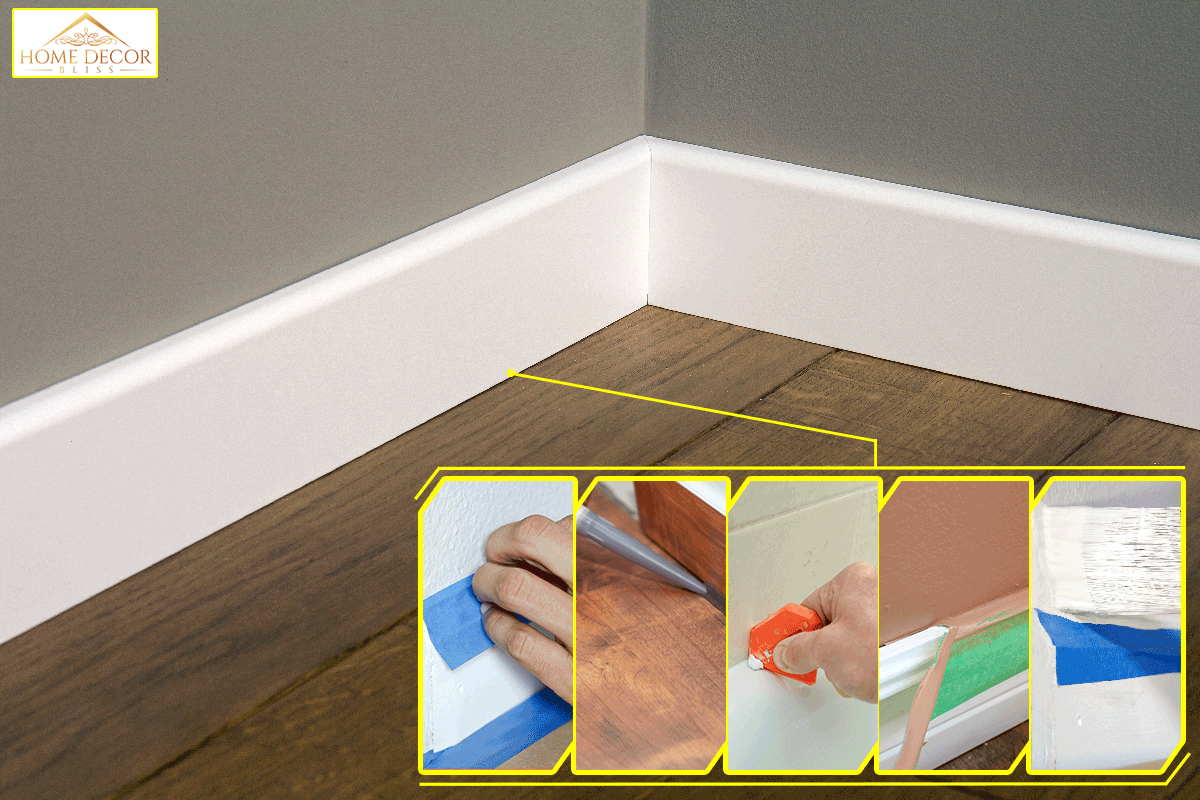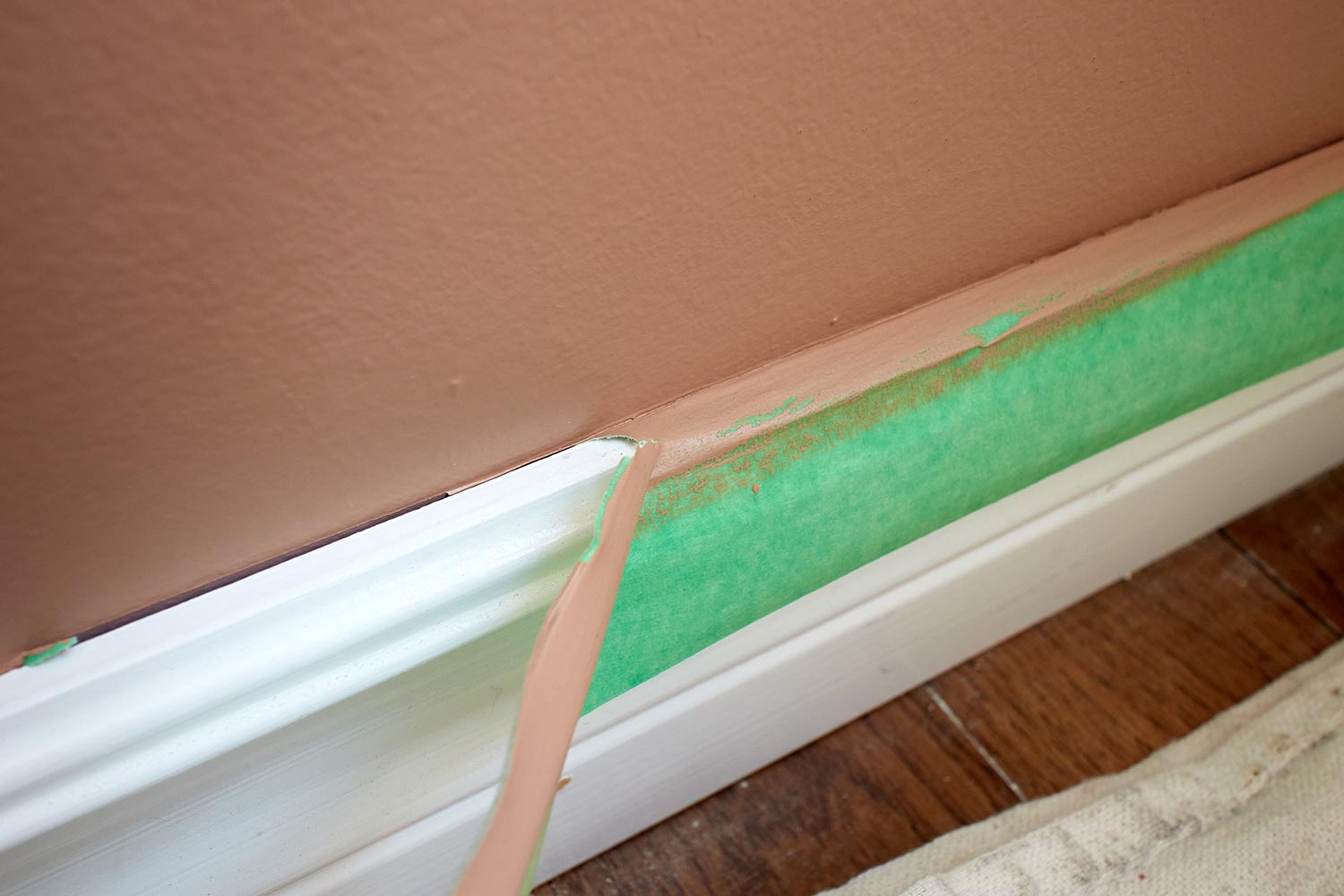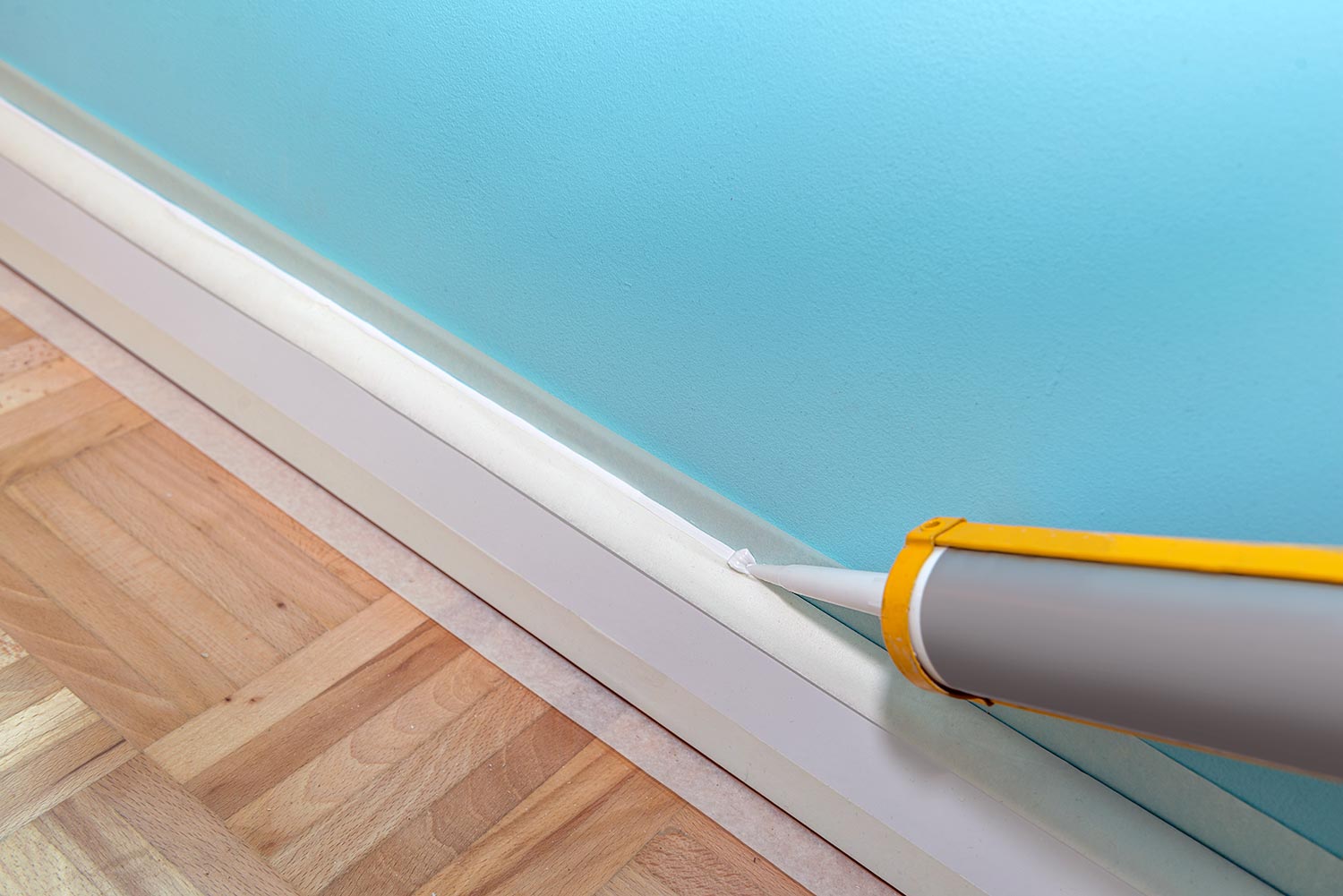Gaps that exist between the floor and the baseboard can serve as breeding grounds for dirt, bugs, mold, hair, and other material that might be difficult to reach with a vacuum. You may be wondering how to close the space between your wood floor and the wall. We've done in-depth research on this matter to bring you the best answers.
Caulk is the best way to fill the space between a baseboard and the floor. Use latex caulk for a seamless, polished appearance. Here are the steps for filling in the gaps between baseboard and floor using caulk:
1. Apply tape
2. Fill the gap with the caulk
3. Smooth out the caulk
4. Take the tape off
5. Paint over the caulk
Any gap between your tiles and baseboard will be noticeable and detract from your home's aesthetics. Continue reading this post for information on how to fill the gap between the baseboard and floor, the right products to use, and more.

Filling The Gap Between Baseboard And Floor
Over time, your home's foundation may settle into poorly compacted, moistened, or shrinking soil beneath it, which can result in gaps between your walls and baseboards. As homes age, their joints and structural components sink and settle.
Caulking the space between the baseboard and tile will make your house more hygienic. If left unfilled, these gaps may start to breed bacteria and mold. Caulking material creates a waterproof seal and is easy and affordable to do.
You can hire a specialist in the field to do the work for you. However, it's not difficult to caulk the space between the baseboard and the floor, and you can definitely do this yourself.
Here are quick steps for filling the gaps between the baseboard and floor:
1. Apply Tape

We sometimes add affiliate links and content that was curated and created by our team with the help of advanced ai tools to help showcase the best design styles.
Use painter's tape for this step. Align the tape with the baseboard's bottom border so that the caulk creates a vertical seal. This method will stop the caulk from spreading onto the tile and giving it an unattractive, amateurish appearance.
Click here to see this blue painter's tape on Amazon.
2. Fill the Gap
![]()
It's crucial to use caulk to create a solid, flexible, waterproof bond between the baseboard and the floor. Pick a caulk that is paintable and flexible. The best caulk for this application is latex.
Sealing the baseboard gap will prevent infestation and moisture damage to your home. Apply caulk gradually in a thin bead until the space between the baseboard and the tile is filled.
Most individual rooms don't require a lot of caulk, but if you're caulking baseboards throughout your home, you may need several tubes.
Click here to see this Kwik Seal latex caulk on Amazon.
3. Smooth out the Caulk
![]()
After applying caulk to the gap, smooth it with a caulking tool. Using a caulking tool will result in a better finish and less mess. You want to create a caulk surface that is level and smooth.
4. Take the Tape Off

You should remove the tape while the caulk is still wet and as soon it has been smoothed. You may use a moist rag to remove any extra caulk from the tile.
5. Paint Your Caulk

Caulk that is not painted will attract dirt and dust. Apply baseboard trim paint to your caulk after it has dried. You may tape the floor again to prevent paint splatters.
Click here to see this Rust-Oleum latex paint on Amazon.
Check out the video below for more information on applying caulk.
Should I Leave A Gap Between The Floor And The Baseboard?
You may always have minor gaps between the baseboard and floor in your home. That is why it's important to use caulk. As mentioned earlier, such gaps can provide a sanctuary for pests like bedbugs and roaches in addition to being an unsightly problem.
Others may leave gaps between their baseboard and floor when they have plants. This is when gaps are advisable to have in your home.
For information about applying carpet in the gap between baseboard and floor, check out this post: Gap Between Carpet And Baseboard – What To Do?
Difference Between Latex Caulk And Silicone Caulk
Every home contains openings and fissures through which indoor air can leave and air can enter from the outside. In this case, you will likely require a sealant.
However, the ideal sealant for you will ultimately depend on the project at hand. Latex and silicone are the two most often utilized sealants. Both are sold in cylinder-shaped tubes with caulking or sealing guns for simple application.
Latex caulk is used for significant purposes like construction projects or in houses and is usually used between the corners of walls. Because caulk dries quicker than silicone, it's perfect for sealing gaps. It's inexpensive, fast-drying, and helpful for many different applications.
Acrylic caulk tends to shrink when drying, so applying a second layer may be necessary. Also, It's not for use when in contact with water.
On the other hand, silicon-based caulk is mainly used to bind surfaces like metal, glass, and plastic. Since silicone has powerful binding qualities, you can use it on many different kinds of surfaces, indoors or out. Silicon sealants retain their flexibility, so they're perfect for many different areas.
Silicon-based caulk is used for bath tiles and sinks. Silicon is non-paintable and does not stick on silicone sealants.
Click here to see this Gorilla waterproof silicone caulk on Amazon.
How Big Of A Gap Can You Fill With Caulk?
Caulk is a gap-closing substance and the best way to seal a significant gap between a baseboard and the floor. However, if you attempt to fill a large gap, the caulk may fall into it.
You should only use caulk to seal any gaps that are 1/4 inches or smaller between your baseboard and floor. Installing shoe molding is the best option to cover a gap that is larger than this.
Click here to see this shoe molding on Amazon.
Should You Use Caulk Or Wood Filler?
Caulk is the best option to seal any cracks or connections between drywall, around baseboards, and other minor gaps and cracks. It takes time to caulk and repair gaps in the wood trim. So the best option here is to use wood filler.
Wood filler is used for nail holes, dents, and cracks in the wood. It can be sanded, and it dries very hard.
Click here to see this Gorilla wood filler on Amazon.
Can You Use Spackle On Baseboards?
You can use spackling compound to close up any corner gaps. This is also a good solution for holes, cracks, dents, and irregularities in wood and painted metal. It is said to be shrink-free and dries quickly.
Click here to see this spackle past with scraper on Amazon.
If the gap is large enough, you may fill it with spackle so that once it is dry, you can mold it into the appropriate shape.
Press it into each opening with your fingertips, allowing it to overfill. Before it solidifies, use a razor knife to scrape it flat. You should sand the area afterward. You do not need to prime over a hole filled with spackle.
Although spackle works fine if you're only going to paint it, wood filler is still the best option.
 Should You Caulk The Top Of The Baseboards?
Should You Caulk The Top Of The Baseboards?

Since caulk is a flexible substance, the wood can move without compromising the seal. You must seal the gap at the baseboards' top with caulk to keep insects out. This is more efficient, less expensive, and simpler than any other way.
Another critical reason to caulk is due to its aesthetics. Also, caulk serves as a watertight sealant to shield the home from damage brought on by water leaks.
In Closing
Even though the process could seem tiresome and time-consuming, repairing the gaps between your baseboard and floor will be worthwhile. The seal between your baseboard and tile will be a big improvement. When the job is finished, it will also look very professional.
If you want a personalized home, you will enjoy completing this work by yourself. But if you're unsure whether you can resolve the problem or not, you should contact a skilled professional.
If you feel inspired, check out these other related posts:







